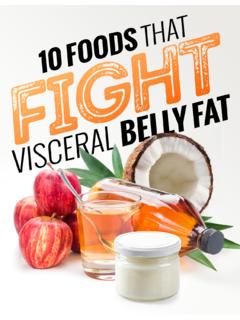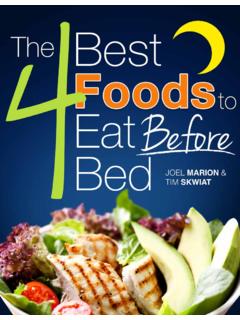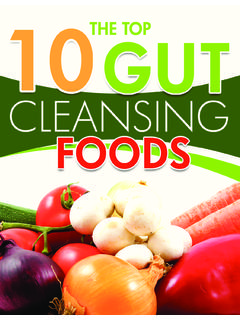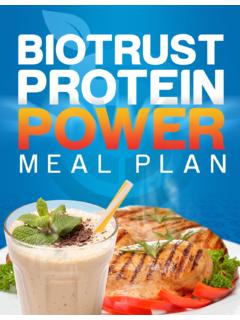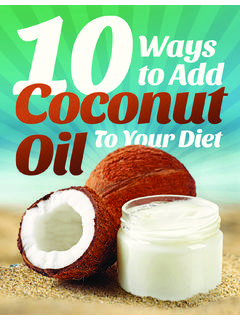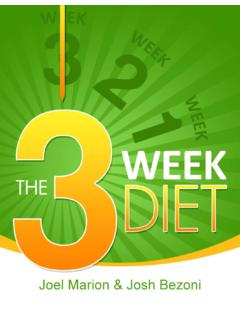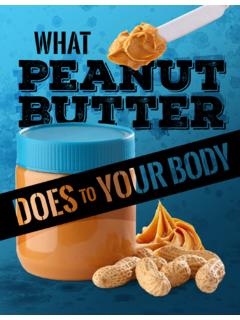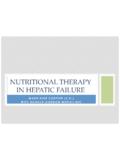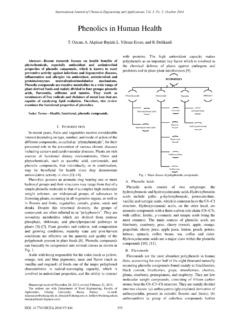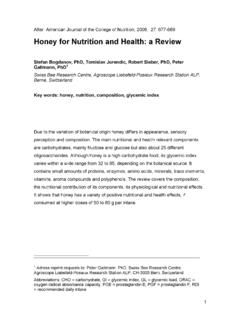Transcription of Joel Marion, CISSN & Tim Skwiat, Pn2
1 2 Joel Marion, CISSN & Tim Skwiat, Pn23 WhaT BaNaNaS Do To Your BoDYWhat is a Banana?Bananas are believed to have originated 10,000 years ago, and the first bananas are thought to have been grown in the Kuk valley of New Guinea around 8000 BC. Later, bananas spread throughout Southeast Asia and the South Pacific, including the Philippines, and then they dispersed across the tropics in all likely, bananas were introduced by traders and travelers in Australia, Indonesia, India, and Malaysia after domestication. Buddhist scriptures mentioned that traders traveling through the Malaysia region tasted the fruits of banana and brought them back with them to India. In 327 BC, Alexander the Great tasted the banana for the first time in the Indian Valleys, and he introduced them to the Western is a general term encompassing several species or hybrids in the genus Musa of the family of flowering plants called Musaceae.
2 More than 300 types of bananas are cultivated throughout the world. Virtually all known edible bananas come from two species: Musa acuminate and Musa balbisiana, which are native to Southeast Asia. Bananas are classified as dessert or sweet bananas and cooking bananas or plantains. Plantains, are generally larger and intended for cooking (although they are edible raw when fully ripe). In this report, the focus will be on sweet are a very popular fruit in the world market, ranking next to rice, wheat, and corn in terms of importance as a food crop. Bananas are consumed as a staple food in many countries. They are grown in over 130 countries worldwide, and the banana constitutes the fifth most important agricultural food crop in terms of world 2003, world production of bananas was estimated to be 102 million metric tons (MT).
3 4 Ten major banana-producing countries accounted for about 75% of total production with India, Ecuador, Brazil, and China accounting for half the total. Latin America and the Caribbean islands supplied more than 80% of the total world exports, with four leading banana exporter countries (Ecuador, Costa Rica, Philippines, and Colombia) accounting for two-thirds of the world exports. Ecuador is the largest banana exporter, and the United States is the major banana importing country in the ,2 What s in a Banana?According to the United States Department of Agriculture (USDA) National Nutrient Database, one medium banana contains: Calories: 105 Fat: Carbohydrate: 27g Sugar: Glucose: Fructose: Sucrose: Starch: Fiber: Protein: and Minerals: Manganese: (16%) Magnesium: 32mg (8%) Phosphorus: 26mg (3%) Potassium: 422mg (12%) Sodium: 1mg (0%) Vitamin C: 10mg (17%) Vitamin B6: (22%) Folate: 24mcg (6%) Vitamin A: 76 IU (2%)5 Beyond the Nutrition FactsBelieve it or not, bananas have a higher antioxidant capacity than some berries, herbs, and vegetables, and this capacity increases during fruit maturity.
4 For example, bananas are a rich source of health-promoting phytochemicals including phenolic compounds, carotenoids, and phytosterols. 1. Phenolic compoundsBananas contain various phenolic compounds and flavonols. The phenolic compounds include gallic acid, catechin, epicatechin, tannins, and anthocyanins. It s the phenolic compounds that give unripe bananas their bitter taste. The main classes of flavonoids found in bananas are the flavonols, which includes quercetin, myricetin, kaempferol, and cyanidin. Phenolic compounds and flavonoids act as protective scavengers ( , antioxidants ) against free #1 Worst Carb Ever (don t eat this)At the link below, we re going to let the cat out of the bag on what is undoubtedly the #1 WORST carb EVER, and how the money-hungry food industry is conspiring to sneak this nightmare carb into just about everything.
5 In the end, this extremely common carb wreaks havoc on your fat-storing hormones in a MAJOR way, and has even been shown to hamper memory, slow brain activity, and increase your risk of Alzheimer > The #1 Worst Carb EVER (don t eat this)2. CarotenoidsCarotenoids provide health benefits due to their unique physiological functions. For instance, they serve as pro-vitamins ( , vitamin A) and play key roles as free radical scavenging antioxidants . Carotenoids have been widely studied for their role in reducing 6the risk of various diseases, including certain cancers and eye and yellow-colored fruits, such as the banana, are rich sources of carotenoids. Bananas specifically have been shown to contain lutein, -carotene, -carotene, violaxanthin, auroxanthin, neoxanthin, iso-lutein, beta-cryptoxanthin, and alpha-cryptoxanthin.
6 Consumption of foods rich in carotenoids improves immunity and reduces risk of diseases, such as cancer, diabetes, and heart PhytosterolsPhytosterols are naturally-occurring components of plants that have a wide variety of health-promoting effects, such as lowering blood cholesterol and reducing the absorption of cholesterol in the intestine. Phytosterols also act as immune system modulators. Bananas contain several phytosterols, including -sitosterol, stigmasterol, campesterol, cycloeucalenol, and Antioxidant ActivityThe banana is considered one of the most important antioxidant-rich foods. Bananas contain various bioactive compounds that have antioxidant potential, which contributes to their defense active reactive oxygen species (ROS), free radicals, and oxidative stress in the body.
7 The antioxidants in bananas can support healthy aging, promote heart health, and support brain health, which are often compromised with excessive oxidative and CarbohydratesThe composition of a banana changes dramatically during ripening, which takes place over the course of eight stages:1. All green2. Green with trace of yellow3. More green than yellow4. Half green, half yellow5. More yellow than green76. Yellow with green tips and necks7. All yellow8. All yellow with brown spotsStarch is the principal component of green (unripe) bananas, which undergoes important changes during ripening. The average starch content drops from 70 80% to less than 1%. The conversion of starch to sugars involves several enzymes (called amylases).
8 Sugars, mainly glucose, fructose, and sucrose, can reach 16% or higher. Eat this TWICE daily for accelerated fat lossAt the link below, we re going to show you the #1 fat-burning meal of ALL-TIME, and how by eating this simple meal twice daily, you can shed fat faster AND easier than ever before. Even better, you can prepare this simple fat-melting meal in less than 60 , it s not too good to be > The #1 Fat-Burning Meal (Eat this 2xs a day)In other words, the riper the banana, the higher the amount of sugar. Conversely, the greener the banana, the higher the amount of starch. As you ll see below, however, this is not just any type of that refrigeration interrupts the ripening process ( , inhibits enzymatic activity).
9 In fact, unripe bananas that are placed in the refrigerator may not be able to resume the ripening process even if they are returned to room temperature. This may be something worth noting given the information that and Resistant StarchResistant starch is so-named because it is a non-digestible carbohydrate ( , fiber). 8 Resistant starch has been shown to increase satiety (feelings of fullness and satisfaction) and reduce food intake both acutely and in the ,4 Research has also shown that consumption of resistant starch increases fat burning, decreases fat storage, and improves insulin ,6 That s not all; researchers speculate that resistant starch may also increase the thermic effect of feeding ( , increases calorie expenditure), and it may also promote weight loss and preserve calorie-burning resistant starch is not digestible by us, it is considered a prebiotic fiber that serves as food for our beneficial gut bacteria ( , probiotics).
10 In other words, gut bacteria feed off resistant starch through the process of fermentation, which results in the production of key chemicals ( , short-chain fatty acids) that fuel our immune cells and stimulate the release of key hunger-suppressing other health benefits have been associated with resistant starch in the GI tract, including enhanced laxation, increased uptake of minerals such as calcium, and reduced symptoms of diarrhea. As a prebiotic, resistant starch has been shown to positively influence the gut bacterial ecosystem, increasing levels of beneficial Bifidobacteria and reducing levels of pathogenic single unripe green banana contains as much as 6 grams of resistant In fact, unripe bananas are known to be the non-manufactured food with the highest resistant starch Researchers from Mexico have shown that 8 10 grams of resistant starch (from bananas)

